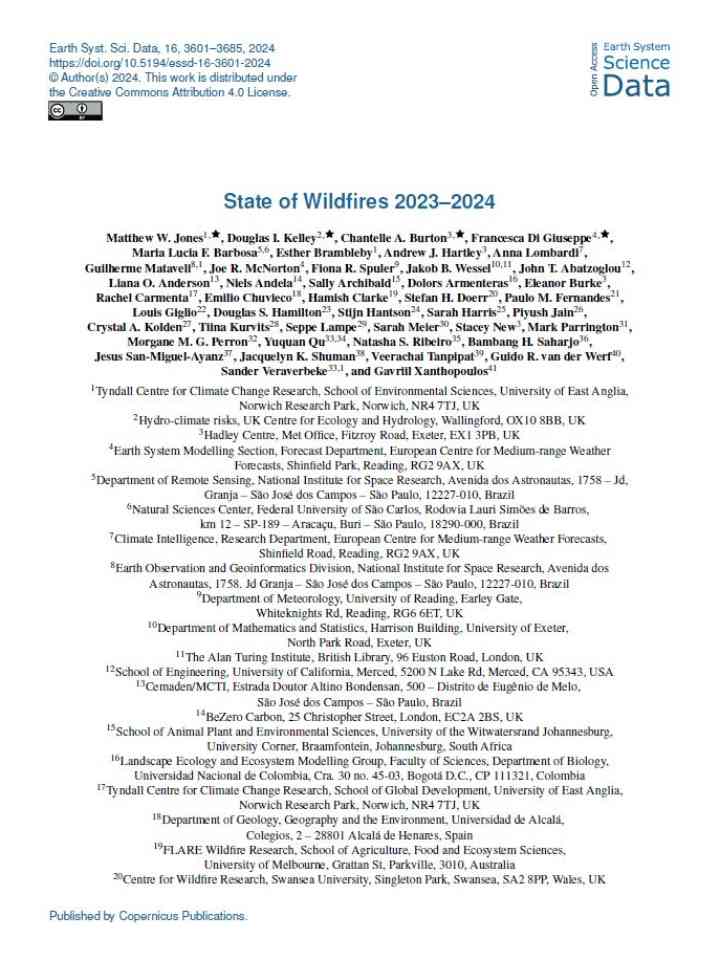State of wildfires 2023-2024
This inaugural State of Wildfires report systematically analyses fire activity worldwide, identifying extreme events from the March 2023–February 2024 fire season. The authors assess the causes, predictability, and attribution of these events to climate change and land use and forecast future risks under different climate scenarios. During the 2023–2024 fire season, 3.9×106 km2 burned globally, slightly below the average of previous seasons, but fire carbon (C) emissions were 16 % above average, totalling 2.4 Pg C. Global fire C emissions were increased by record emissions in Canadian boreal forests (over 9 times the average) and reduced by low emissions from African savannahs. Notable events included record-breaking fire extent and emissions in Canada, the largest recorded wildfire in the European Union (Greece), drought-driven fires in western Amazonia and northern parts of South America, and deadly fires in Hawaii (100 deaths) and Chile (131 deaths).
Over 232 000 people were evacuated in Canada alone, highlighting the severity of human impact. Our analyses revealed that multiple drivers were needed to cause areas of extreme fire activity. In Canada and Greece, a combination of high fire weather and an abundance of dry fuels increased the probability of fires, whereas burned area anomalies were weaker in regions with lower fuel loads and higher direct suppression, particularly in Canada. Fire weather prediction in Canada showed a mild anomalous signal 1 to 2 months in advance, whereas events in Greece and Amazonia had shorter predictability horizons. Attribution analyses indicated that modelled anomalies in burned area were up to 40 %, 18 %, and 50 % higher due to climate change in Canada, Greece, and western Amazonia during the 2023–2024 fire season, respectively.
Explore further
